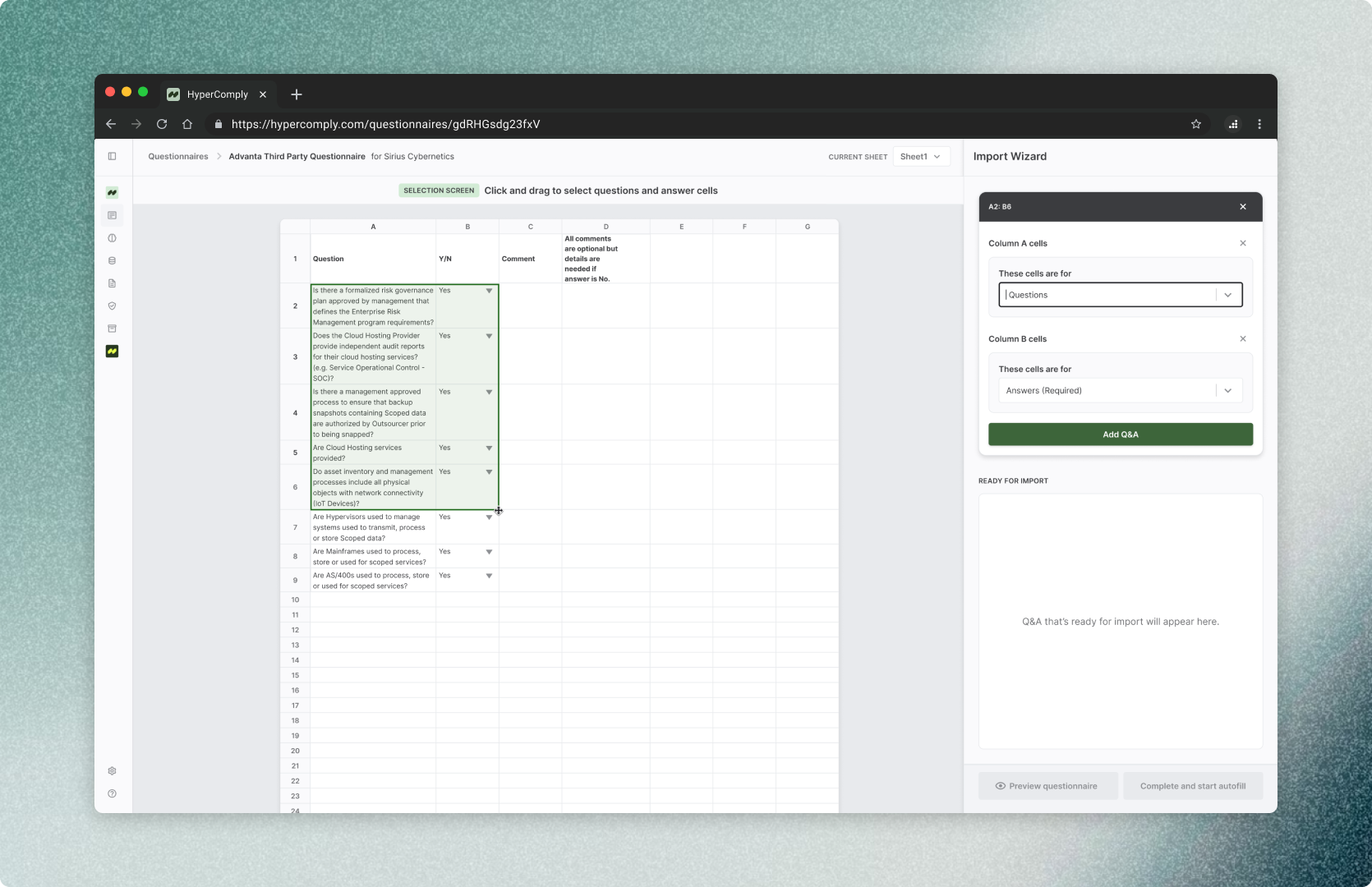Problem
Security questionnaires are a recurring source of friction for compliance and sales teams. They’re long, repetitive, and often block deals from moving forward.
At the time, users submitted documents, our AI answered them, and our compliance experts reviewed them manually before sending them back.
This created delays, lacked visibility, and made turnaround times unfavourable. We needed a faster, more scalable way to process questionnaire submissions.
How do we enable users to import questionnaire files on their own for a faster turnaround, and route them through an approval workflow without compromising control or trust?

Users
We focused on two primary user types:
- Customer success and sales teams: responsible for submitting security questionnaires during sales cycles
- Account admins: responsible for approving or rejecting submissions and managing the company’s spend
The solution had to serve both fast-moving submitters and security/spend-conscious admins.
Solution
HyperComply compliance experts use a legacy internal importing tool to import and autofill the questionnaire and then review the answers. We updated this tool and removed the specialist from the equation, allowing the user to self-import questionnaires and significantly reduce turnaround time.
The tool was kept simple and free, so that customers save their credits for larger questionnaires that require HyperComply’s compliance experts.
We also introduced a submission request flow that allows admins to be in control of handling questionnaire submissions.
My Role
I led the design for this feature in close collaboration with our full-stack engineer and product manager.
I was responsible for mapping the end-to-end flow, writing UX copy, designing error states and edge cases, and working through technical tradeoffs with engineering.

Designing for Complexity
This project involved several invisible layers of logic that needed to be handled gracefully:
- File type handling: We supported
.doc,.docx,.pdf, and.xlsxformats. I designed a dynamic interface with clear validation feedback and specific selection tools depending on the file type. - Review workflow: Submissions were routed into an approval queue. I designed an admin-facing UI where admins could inspect and approve or reject files that didn’t meet their thresholds, along with a submitter-facing UI where submitters could track their requests.
The hardest part was designing a process that felt fast and automated on the surface, while remaining human-in-the-loop and reviewable under the hood.

Cross-Functional Collaboration
Throughout the project, I partnered with:
- Engineering to prototype and test how we’d parse and validate various file structures, while maintaining speed and reliability
- Support to identify the most frequent import-related pain points from customers and incorporate those into the UX
Results
- Reduced average total questionnaire turnaround time (from approving submissions to marking complete) from 48 hours to half an hour
- Enabled non-technical team members to confidently submit files with minimal guidance
- Introduced a scalable pattern for handling AI-assisted import flows
Retrospective
This project reinforced my belief that B2B workflows should feel seamless and understandable, even when the logic behind the scenes is complex and messy. By reusing existing technology, intentional UX copywriting, and a clear review workflow, we helped teams move faster while retaining control and trust.
